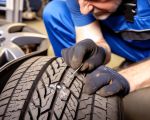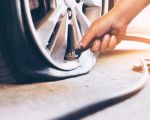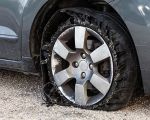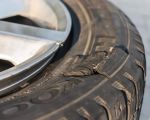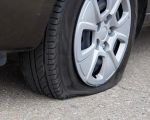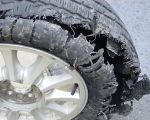How Does Tire Rotation Help Prevent Flat Tires?
Over the years, I've learned a lot about car maintenance—often the hard way. I’ve been stranded on the side of the road more than once with a flat tire, and while some breakdowns are unavoidable, many can be prevented with regular care. One of the most important things I've discovered in maintaining my car and avoiding inconvenient tire issues is tire rotation. While it may sound like a simple task, tire rotation plays a significant role in keeping your car running smoothly and preventing unexpected problems like flat tires. In this article, I’ll explain how tire rotation helps prevent flat tires, and why it’s a key part of your car maintenance routine.

MR. TIRE INC.
2078 New York Ave, Huntington Station, NY 11746, USA
1. What is Tire Rotation?
Before diving into how tire rotation can help prevent flat tires, it’s important to understand what tire rotation actually is. Tire rotation refers to the practice of moving your car’s tires from one position to another, usually swapping the front and back tires or moving them to different sides of the vehicle. This ensures that the wear on the tires is distributed more evenly, as tires tend to wear out faster in certain positions depending on factors like alignment, weight distribution, and the way you drive.

MR. TIRE INC.
2078 New York Ave, Huntington Station, NY 11746, USA
1.1. Even Wear and Tear
When I first got my car, I didn’t think much about tire wear, and I would often ignore the recommendation to rotate my tires regularly. But eventually, I started to notice that one of my tires was wearing down much faster than the others, which could lead to uneven traction and an increased risk of flats. By rotating the tires every 6,000 to 8,000 miles, I can help balance out the wear and ensure that no one tire is overworked.
1.2. Improved Vehicle Performance
Tire rotation also improves overall vehicle performance. As the wear on the tires is balanced, the car handles better and provides a smoother ride. In my experience, rotating tires not only helps prevent flat tires but also improves the longevity of the tires, meaning fewer trips to the tire shop for replacements. It's a simple step that pays off in the long run.
2. How Tire Rotation Helps Prevent Flat Tires
Now that we know what tire rotation is, let’s look at how it helps prevent flat tires specifically. Tire rotation is essential because it directly impacts how the weight and stress on the tires are distributed. When one or more tires are unevenly worn, they can be more susceptible to flats, blowouts, and other issues. Here’s how regular tire rotation can help avoid these problems:
2.1. Even Pressure Distribution
One of the key factors that contribute to tire wear is the way pressure is distributed across the tire’s surface. If a tire is constantly subjected to uneven pressure—such as if it’s always in the front position where it handles more of the braking—then the tire can wear out faster, leaving it more vulnerable to damage. Regular tire rotation helps to balance the pressure across all four tires, reducing the risk of a flat. I’ve noticed that since I started rotating my tires regularly, I haven’t had nearly as many issues with blowouts or flats.
2.2. Reduced Risk of Uneven Wear and Vulnerability
Another way tire rotation prevents flat tires is by ensuring that no tire becomes excessively worn or compromised. Tires that are allowed to wear unevenly are more likely to develop weaknesses in certain areas. These weak spots can lead to tire failures, such as punctures or blowouts, especially if you encounter road debris or sharp objects. I’ve had a couple of close calls where I thought I was about to get a flat due to uneven tire wear. After rotating my tires regularly, I’ve been able to extend the lifespan of my tires and avoid these types of incidents.
2.3. Prolonging Tire Lifespan
By rotating your tires regularly, you’re essentially spreading out the wear and tear, which helps each tire last longer. This is crucial because tires are expensive, and having to replace them prematurely can be costly. I remember the first time I needed to replace a set of tires, and it was quite the hit to my wallet. Regular tire rotation has allowed me to get the maximum life out of my tires, and I’ve been able to delay having to replace them as frequently. The longer your tires last, the less often you need to worry about breakdowns due to flat tires.
3. Signs You Need a Tire Rotation
While tire rotation is essential for maintaining your tires’ health, it can sometimes be easy to forget about. There are a few signs to watch for that will tell you it’s time to rotate your tires. These are some of the warning signs I keep an eye on:
3.1. Uneven Tire Wear
If you notice that one tire seems to be wearing down faster than the others, it’s time to rotate your tires. This could be caused by misalignment, improper inflation, or simply the weight distribution of your car. Regular tire rotation helps ensure that no one tire takes the brunt of the stress.
3.2. Steering Issues
If you start to notice that your car pulls to one side or if the steering feels unresponsive, it could be a sign that your tires are unevenly worn. This is a problem that I’ve experienced in the past, and after getting a tire rotation, the steering returned to normal. Misaligned tires can also cause uneven wear, which is another reason why regular rotations are so important.
3.3. Increased Vibration or Noise
If your car starts vibrating more than usual while driving, or if you hear unusual noise from your tires, this could be a sign of uneven wear. I remember driving on a bumpy road once and hearing a strange noise coming from my tires. It turned out that a lack of tire rotation was causing one of the tires to wear down prematurely. After rotating the tires, the noise disappeared.
4. The Importance of Professional Tire Rotation Services
While it’s possible to rotate your own tires, I’ve found that it’s best to leave it to the professionals. When I’ve had my tires rotated at a service center, I know they’re being checked for other potential issues like alignment or balance. I’ve had instances where tire rotation revealed underlying issues, such as alignment problems that were affecting tire wear. A professional tire rotation also ensures that the job is done properly, with the right tools and techniques, ensuring my safety and the longevity of my tires.
4.1. Expert Recommendations
When you go to a professional tire service, they can also offer expert advice on things like tire pressure, tread depth, and alignment. I’ve learned that proper maintenance goes beyond just rotating the tires—it also involves checking the overall health of the tires. The professional technicians are always available to give tips that help me keep my car in top shape and prevent future issues.
5. Conclusion
Tire rotation is one of the simplest and most effective ways to ensure your tires last longer, provide better performance, and prevent problems like flat tires. By ensuring that your tires wear evenly, you can avoid unexpected issues on the road, saving time, money, and hassle. Regular tire rotation not only helps improve your vehicle’s safety and handling, but it also protects you from the frustration of dealing with flat tires. Make tire rotation a regular part of your car maintenance routine, and you’ll enjoy smoother, safer drives with fewer surprises along the way.














